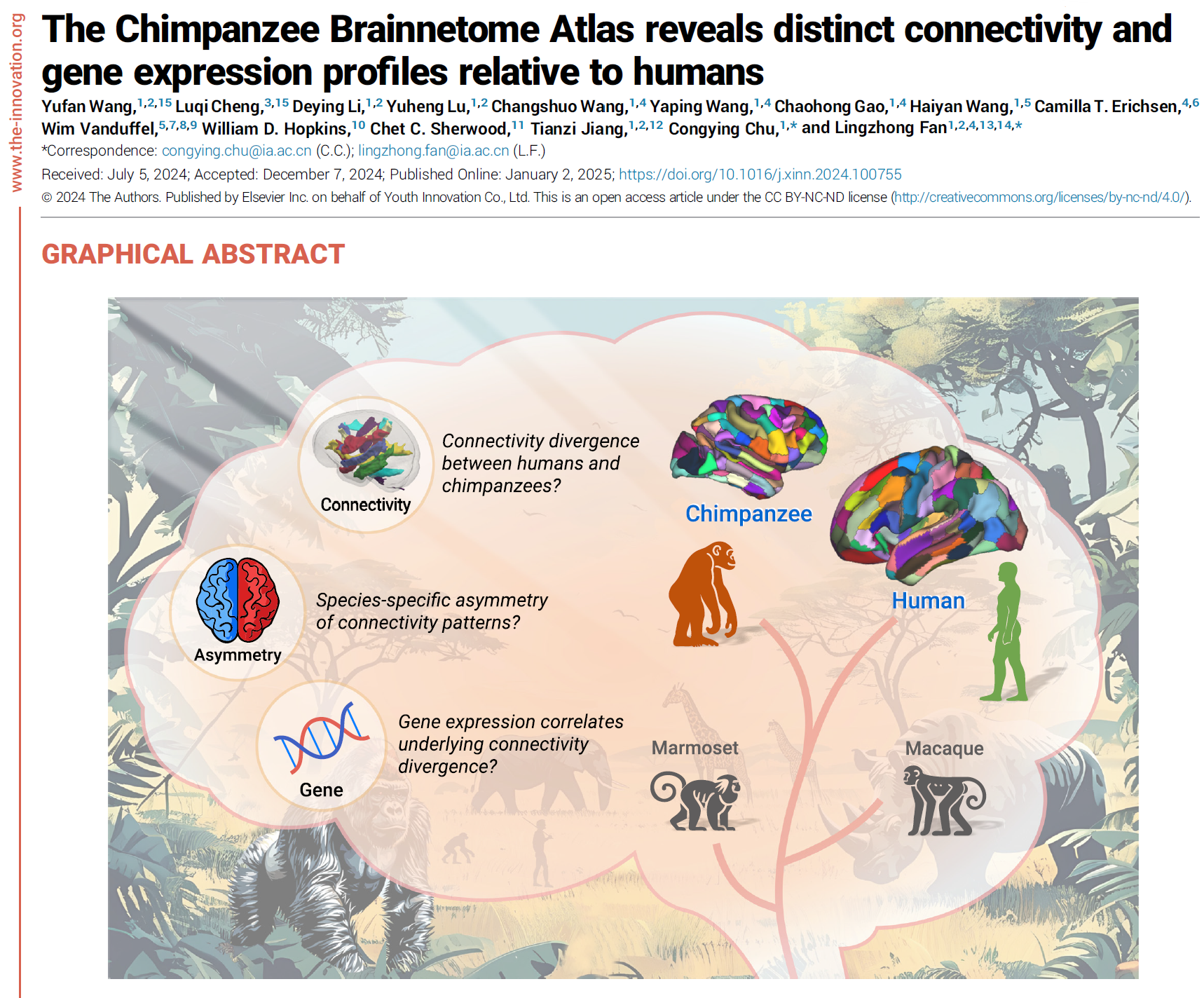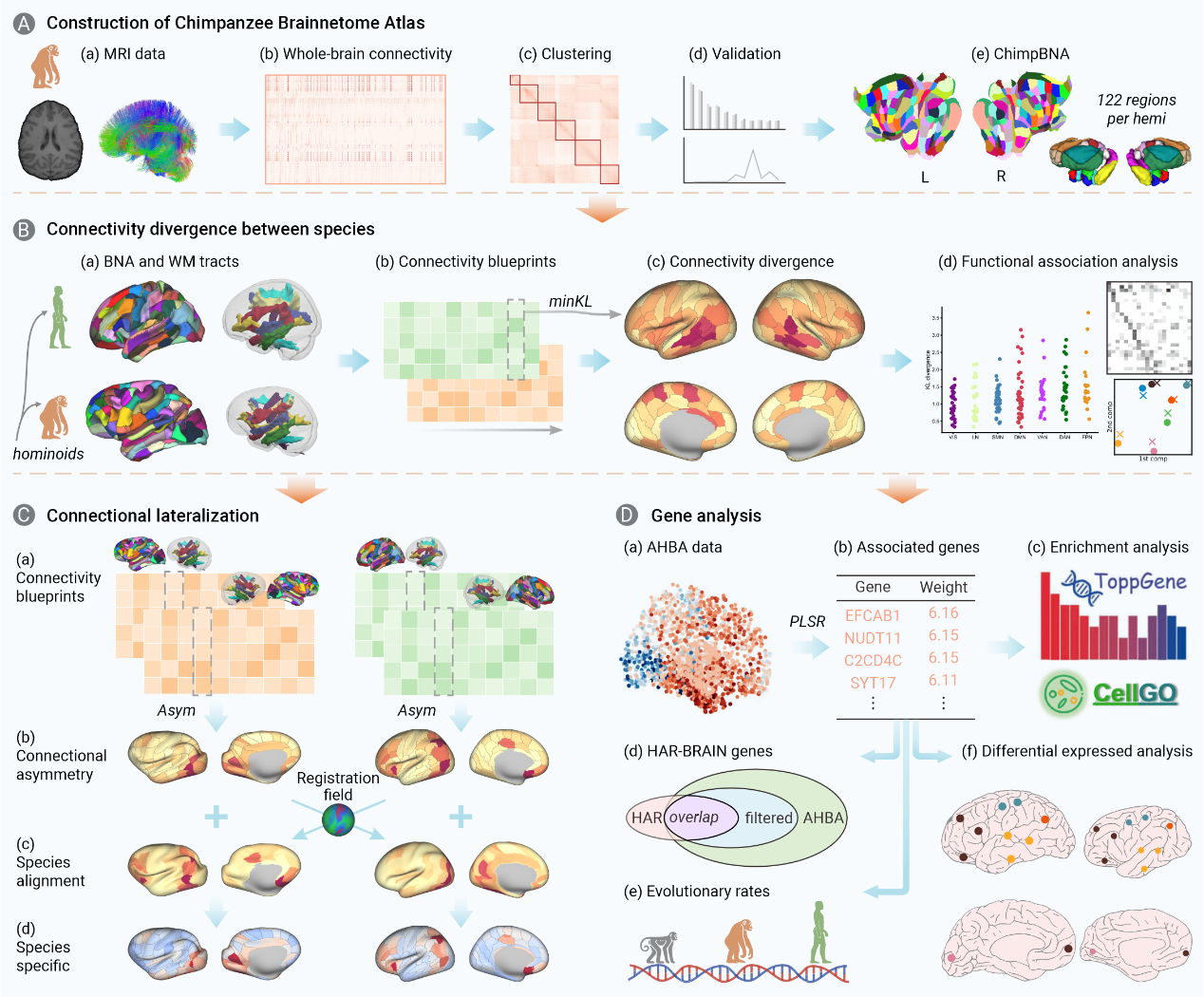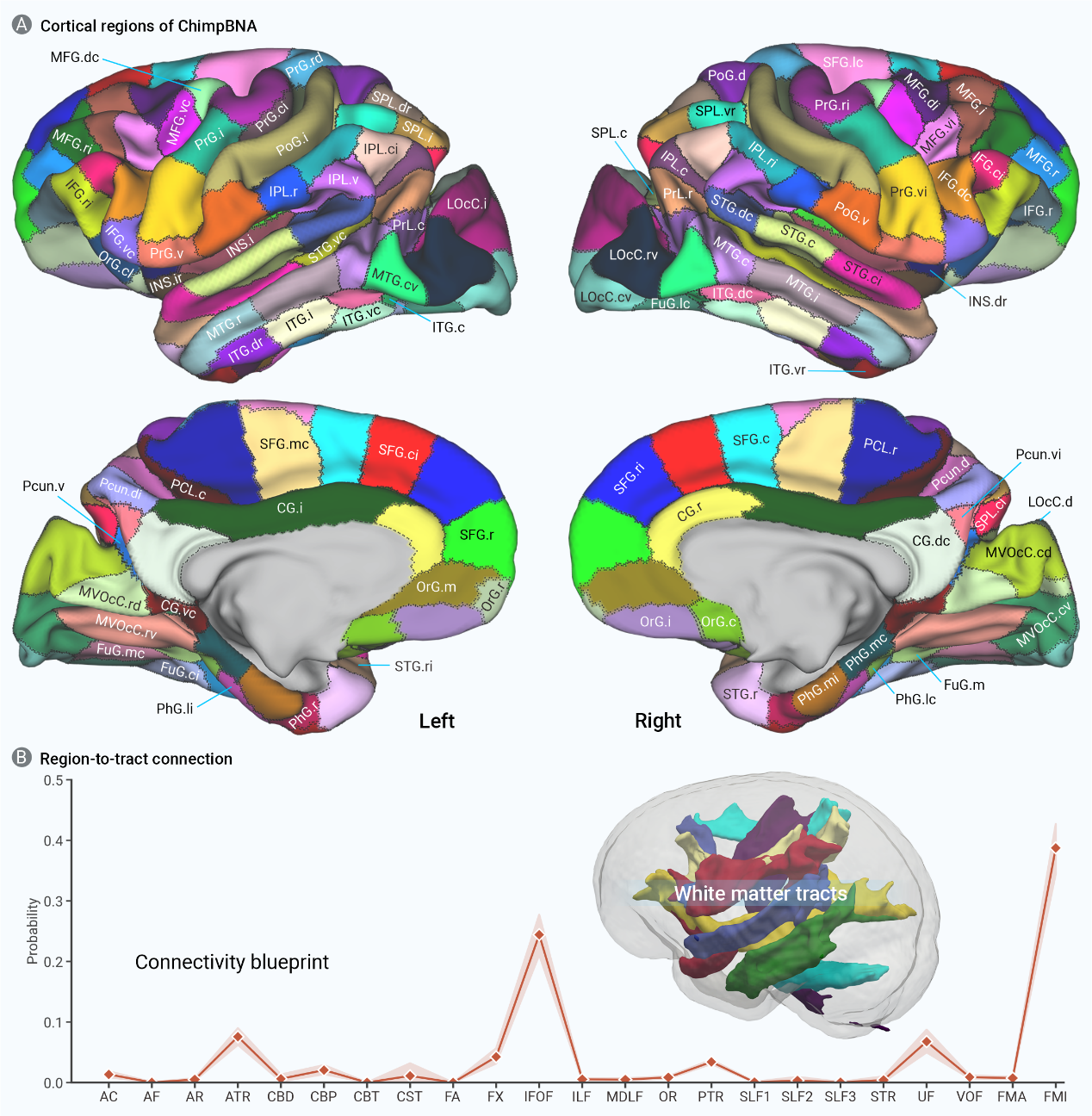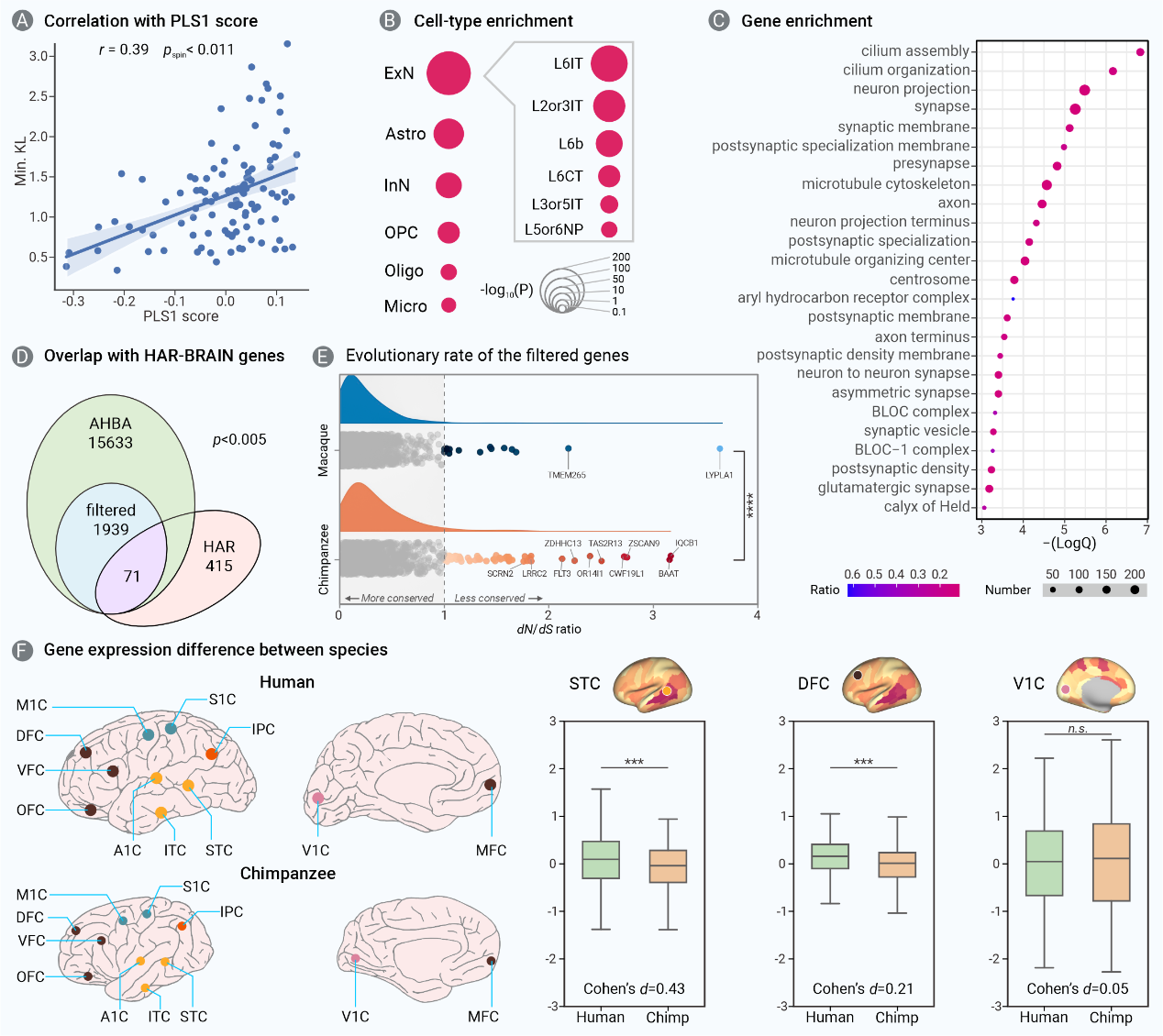Chimpanzee Brainnetome Atlas Released: Cross-Species Research Reveals New Clues to Human Brain Evolution
Font:【B】 【M】 【S】
In January 2025, the Brainnetome Research Group of the Laboratory of Brain Atlas and Brain-Inspired Intelligence at the Institute of Automation, Chinese Academy of Sciences, in collaboration with multiple domestic and international research institutions, released the most detailed chimpanzee brain atlas to date—the Chimpanzee Brainnetome Atlas (ChimpBNA). This achievement not only provides an important tool for comparative neuroscience research but also offers new perspectives on understanding human brain evolution.
Chimpanzees (Pan troglodytes) are humans’ closest primate relatives, sharing a common ancestor approximately 6 to 8 million years ago. Although the chimpanzee brain is only about one-third the size of the human brain, it shows many anatomical and cognitive similarities, including social behavior, working memory, and tool use. These similarities make chimpanzees a key comparative model for understanding human evolution. However, one major challenge in cross-species neuroscience research is the lack of biologically meaningful standardized brain reference systems. Previous comparative analyses have tried to define homologous cortical regions across species using cell architecture, myelin distribution, macroanatomy, functional connectivity patterns, functional activations, or combinations of these features. But due to inconsistent modalities and scales in building these atlases, direct cross-species comparisons have been difficult.

Figure 1. Graphical abstract of the research work
To address this challenge, the Brain Network Group successfully created the Chimpanzee Brainnetome Atlas based on their foundational approach of using brain connectivity information to map the brain. Using this atlas, the team reconstructed homologous white matter tracts and built connectivity fingerprint maps for both humans and chimpanzees, enabling fine-grained, subregion-level cross-species analyses of brain connectivity differences and identification of relevant white matter bundles. The team further examined broad lateralization patterns in each species’ brain connectivity and aligned these patterns with interspecies connectivity differences in a common space, successfully identifying genes and their expression patterns associated with interspecies connectivity differences.

Figure 2. Research framework diagram

Figure 3. Chimpanzee Brainnetome Atlas
The results show that the Chimpanzee Brainnetome Atlas reveals connectivity patterns that differ significantly from those in the human cerebral cortex, particularly in the lateral temporal lobe and dorsolateral prefrontal cortex. These differences do not simply mirror cortical expansion patterns, suggesting that connectivity changes during cortical evolution may be more complex and subtle than previously thought. Additionally, the study identified regions with asymmetric connectivity between species that may have arisen due to evolutionary divergence. Genes highly expressed in these differential connectivity regions are enriched in cell types critical for cortical projection circuits and synapse formation, suggesting these genes play important roles in neural circuit development, function, and evolution.

Figure 4. Cross-species differences in brain connectivity patterns

Figure 5. Genetic basis underlying cross-species (human vs. chimpanzee) brain connectivity differences
This newly released Chimpanzee Brainnetome Atlas provides a detailed map of the chimpanzee brain that will become an important resource for neuroscience research and offer new clues about human brain uniqueness. By integrating neuroimaging and genetic data, the study provides potential gene expression correlates for species-specific differences in the evolution of human cognitive abilities. Future work by the research team will focus on building more accurate cross-species homology mappings to further enhance the utility of brain atlases in understanding nervous system evolution.
To facilitate collaborative research among scientists worldwide, the team has made available the surface and volumetric data files of the Chimpanzee Brainnetome Atlas, as well as the source data supporting all figures. The research was published in the multidisciplinary journal The Innovation (IF=33.2). The first authors are Yufan Wang (PhD student at the Institute of Automation) and Dr. Luqi Cheng of Guilin University of Electronic Technology. Corresponding authors are Professors Lingzhong Fan and Congying Chu. Other main collaborators include Professor Tianzai Jiang, Professor Chet C. Sherwood of George Washington University, Professor William D. Hopkins of The University of Texas MD Anderson Cancer Center, and Professor Wim Vanduffel of KU Leuven, Belgium. The study was supported by the “Science and Technology Innovation 2030 – Brain Science and Brain-Inspired Research” Major Project and the National Natural Science Foundation of China.
Paper Information:
Yufan Wang, Luqi Cheng, Deying Li, Yuheng Lu, Changshuo Wang, Yaping Wang, Chaohong Gao, Haiyan Wang, Camilla T. Erichsen, Wim Vanduffel, William D. Hopkins, Chet C. Sherwood, Tianzi Jiang, Congying Chu, Lingzhong Fan. The Chimpanzee Brainnetome Atlas reveals distinct connectivity and gene expression profiles relative to humans, The Innovation, 2025, DOI: 10.1016/j.xinn.2024.100755.
Paper Link:
https://www.cell.com/the-innovation/fulltext/S2666-6758%2824%2900193-0
Open-Source Data:
https://github.com/FANLabCASIA/ChimpBNA
Webpage Link:
https://molicaca.github.io/atlas/chimp_atlas.html
Copyright Institute of Automation Chinese Academy of Sciences All Rights Reserved
Address: 95 Zhongguancun East Road, 100190, BEIJING, CHINA
Email:brain-ai@ia.ac.cn